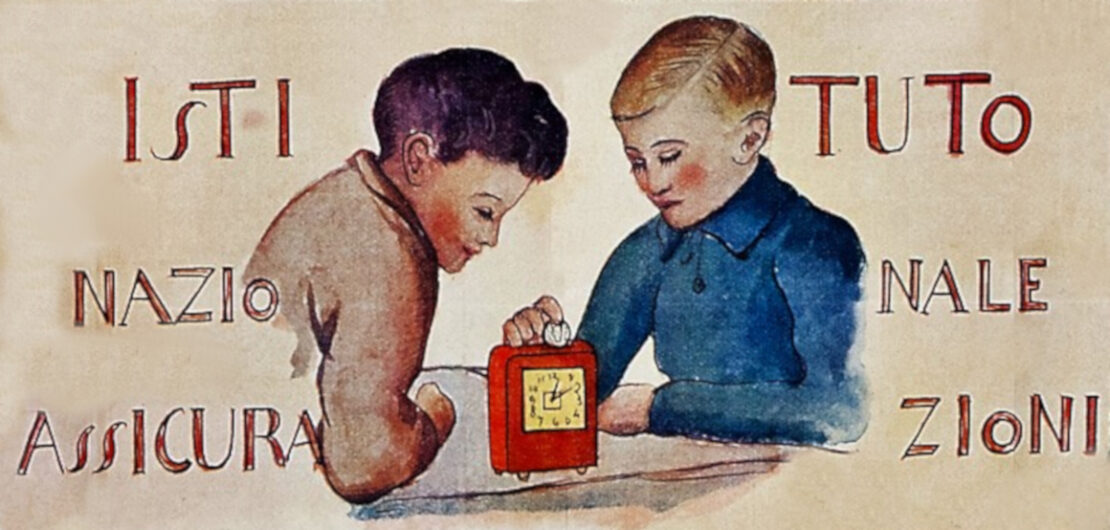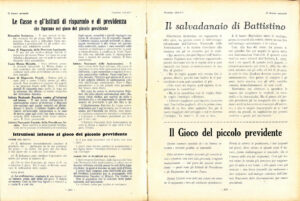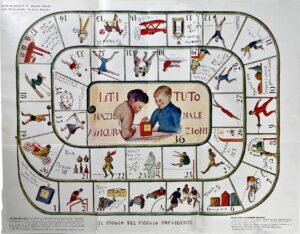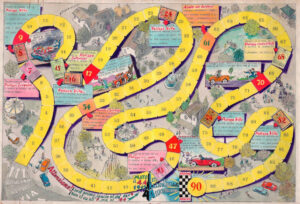Teaching children the art of saving and welfare: produced in the 1930s by the Istituto Nazionale delle Assicurazioni (INA) in pastel shades in a 55×43 cm format, Il Giuoco del piccolo previdente [The Game of the Little Saver] is a true work of art.
Teaching about the importance of savings, this board game was designed for the children of INA and Assitalia insured people not purely as a marketing exercise, but as an educational tool. The game was played by taking turns with the special dice. These could be obtained from the general agencies throughout Italy and from the Comitato di propaganda delle assicurazioni popolari [Popular Insurance Advertising Committee] of Milan – but only in person, not by mail, as is made clear in the December 1933 issue of “La Buona Semente” magazine, which came with the game. The players would move up through the tiles with the names of savings & loan associations and be moved back through the tiles which could tempt them into spending their savings.
The middle of the board has a drawing of two children placing a coin into their clock-shaped piggy bank. At the time, the INA, as well as other insurers (including Generali), would gift real versions of these to people who signed up to a popular policy.
During the sixties, the INA produced two further versions of this unique game of the time, brightly coloured and almost cartoonish. These two differ slightly from each other, although both are bigger than the Giuoco del piccolo previdente. Both appear to be making reference to the modern art of risk management, which examines the likely consequences of a given risk and not the probability of it coming to pass. This ties into the ability to overcome an event which follows a different path to the expected and hoped for outcome (one of the two games is even called Il circuito dei rischi [The Circuit of Risks]. No dates are given but the reference to mandatory vehicle insurance, which became law in Italy in 1969, places them within that period of time.
The tombola has a long and rich history. It shares the element of chance with the lotto and il gioco dell’oca [The Game of the Goose], with different combinations of numbers on the die carrying prizes and punishments. The story goes that the tombola has Neapolitan roots: in 1734, a dispute broke out between King Charles III and the Dominican friar Gregorio Maria Rocco regarding the Church’s request to suspend the Christmas lotto game. In response, the Neapolitans invented the tombola, a domestic version of the lotto, to ensure their continued entertainment during the holidays. The Game of the Goose appears to go back even further: it was invented by the Templars, taking inspiration from the Camino de Santiago in the 11th century. During medieval times, the goose was a symbol of the afterlife and was said to guide pilgrims, as in the classic culture where the goose and the swan were symbolically linked to wisdom and initiation rites.




